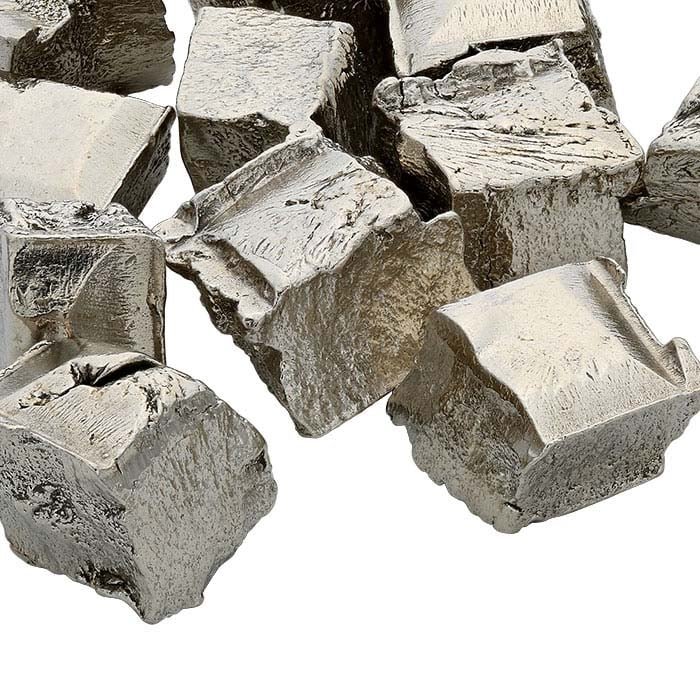Address
304 North Cardinal
St. Dorchester Center, MA 02124
Work Hours
Monday to Friday: 7AM - 7PM
Weekend: 10AM - 5PM
Address
304 North Cardinal
St. Dorchester Center, MA 02124
Work Hours
Monday to Friday: 7AM - 7PM
Weekend: 10AM - 5PM

Hey there reader! Today, we’re diving into the fascinating world of bronze, but with a twist. We’ll be exploring white bronze and its unique properties that set it apart from regular bronze.
If you’re curious about whether white bronze tarnishes like regular bronze, how its patina develops over time, its tarnish resistance, and durability compared to regular bronze, you’ve come to the right place. So, let’s buckle up and embark on this metallurgical journey!
Let’s start by understanding what makes white bronze so special. White bronze, also known as tin-based bronze, is an alloy that differs from regular bronze in its composition.
The white bronze alloys contain between 40-60% tin are, as the name implies, white in color, tarnish resistant and are moderately hard.
While regular bronze typically consists of copper as its primary component, white bronze takes a different route. It is primarily composed of tin, along with other elements like zinc, antimony, and sometimes nickel or silver.
Now, you might wonder, “What sets white bronze apart from regular bronze?” Well, the absence of copper is a significant distinction.
This absence gives white bronze its distinctive color, which resembles silver or pewter. In terms of appearance, white bronze exhibits a lustrous and silvery shine, making it an intriguing alternative to traditional bronze.
Regular bronze is known to develop a natural tarnish over time. When exposed to oxygen, moisture, and other environmental elements, a thin layer of oxidation forms on the surface of bronze, leading to a darker, aged appearance. This tarnish is often appreciated for the character and depth it adds to bronze objects, creating what is called a patina.
So, does white bronze tarnish like regular bronze? Well, the good news is that white bronze exhibits greater tarnish resistance due to its unique alloy composition.
Without the presence of copper, white bronze is less prone to oxidation and tarnishing. However, it’s important to note that white bronze can still develop a patina over time, albeit with a different visual character compared to regular bronze.
When it comes to durability, white bronze holds its ground admirably. It boasts similar strength and hardness to regular bronze, making it a reliable choice for various applications. Whether it’s jewelry, sculptures, or decorative objects, white bronze can withstand the test of time.
Comparing the tarnish resistance of white bronze to regular bronze, we can confidently say that white bronze outperforms its copper-laden counterpart.
Thanks to its tin-based composition, white bronze exhibits greater resistance to tarnish and discoloration.
This means that white bronze jewelry and objects maintain their bright and shiny appearance for longer periods without requiring frequent polishing or maintenance.
To give you a quick snapshot, here’s a comparison table summarizing the key differences:
| Property | Regular Bronze | White Bronze |
| Tarnish Resistance | Prone to tarnish | Greater resistance |
| Patina Development | Dark, aged appearance | Unique, lustrous patina |
| Durability | Reliable and robust | Similar to regular bronze |
| Key Component | Copper | Tin, zinc, and others |
| Visual Appearance | Warm, reddish-brown | Lustrous, silvery |
Now, let’s talk about wearing white bronze jewelry in water. While this type of bronze exhibits better tarnish resistance compared to regular bronze, prolonged exposure to water can still have some effects.
Water, especially if it contains chemicals or minerals, can accelerate tarnishing and potentially cause discoloration.
To keep your white bronze jewelry looking its best, it’s advisable to remove it before swimming, showering, or participating in water-related activities.
This precaution will help minimize the exposure to moisture and chemicals that can affect the metal’s appearance.
If you accidentally wear your white bronze jewelry in water, it’s important to dry it thoroughly afterward.
Use a soft cloth to gently remove any moisture and ensure it’s completely dry before storing it.
By taking these simple steps, you can extend the lifespan of your white bronze jewelry and keep it looking stunning for longer.
In the realm of bronze, white bronze shines as a captivating alternative to regular bronze. With its unique alloy composition, white bronze exhibits greater resistance to tarnish and discoloration. While it can still develop a patina over time, the visual character of white bronze is distinct from regular bronze, offering a lustrous and silvery appeal.
In terms of durability, white bronze holds its own, showcasing strength and hardness comparable to regular bronze. However, it’s important to exercise caution when wearing white bronze jewelry in water to avoid potential tarnishing or discoloration.
So, whether you’re considering white bronze jewelry or exploring the world of metallurgy, remember that white bronze brings its own charm and longevity to the table. Embrace its beauty, care for it with mindfulness, and let it grace your life with its unique shimmer and allure. Happy exploring and may your bronze adventures be truly captivating!